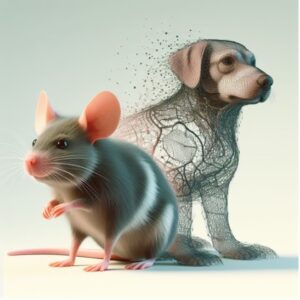High quality research using fewer laboratory animals represents a major challenge across diverse research areas. In 2006, the National Institute of Public Health and the Environment (RIVM) in the Netherlands launched the Interspecies Database aiming to assist researchers in refining and reducing the use of laboratory animals. This initiative was successful, as shown by a user survey in 2010, that highlighted the substantial impact of the information available on the site, leading to a noteworthy decrease in laboratory animal usage. Since 2015, the website has been adopted and maintained by the 3Rs Centre Utrecht (3RCU). The data in the Interspecies Database is managed by both the RIVM and the 3RCU.
The Database offers freely accessible information on physiological, anatomical, and biochemical parameters. These parameters encompass, amongst others, organ weights, pH levels, CYP activities, GST, ventilation rates, and E. coli counts. Primarily focusing on parameters in organs and tissues relevant for kinetics following oral exposure, the database provides data on similar parameters for humans and for various laboratory animal species of different ages and strains. This information can be used for designing intelligent animal experiments, by aiding in the selection of the most pertinent animal species, strain, sex, and age with respect to the relevant exposure scenario.
Scientific rationale

Substantial interspecies differences exist, complicating the reliable extrapolation of results to for example the human context. These differences in anatomical features like nose size (pertinent to inhalatory exposure), fur (relevant to topical application), intestinal anatomy and physiology, metabolic pathways, metabolic rates, and extent of biliary excretion, may affect the kinetics and/or dynamics of compounds. Conversely, there are notable similarities between animals and humans, such as the liver serving as a crucial metabolising organ, the liver and the kidney acting as significant excretory organs, comparable circulatory systems, and specialised mechanisms for xenobiotic elimination.
This Database serves as a resource for comprehending the impact of anatomical and physiological differences, including biotransformation, among and within (sub)species on the kinetics of xenobiotics.
Disclaimer
The website is property of and managed by the 3Rs Centre Utrecht (3RCU). When accessing or visiting this website, and/or utilising the information provided herein, it is crucial to familiarise oneself with the disclaimer and express agreement with its terms (disclaimer information).



